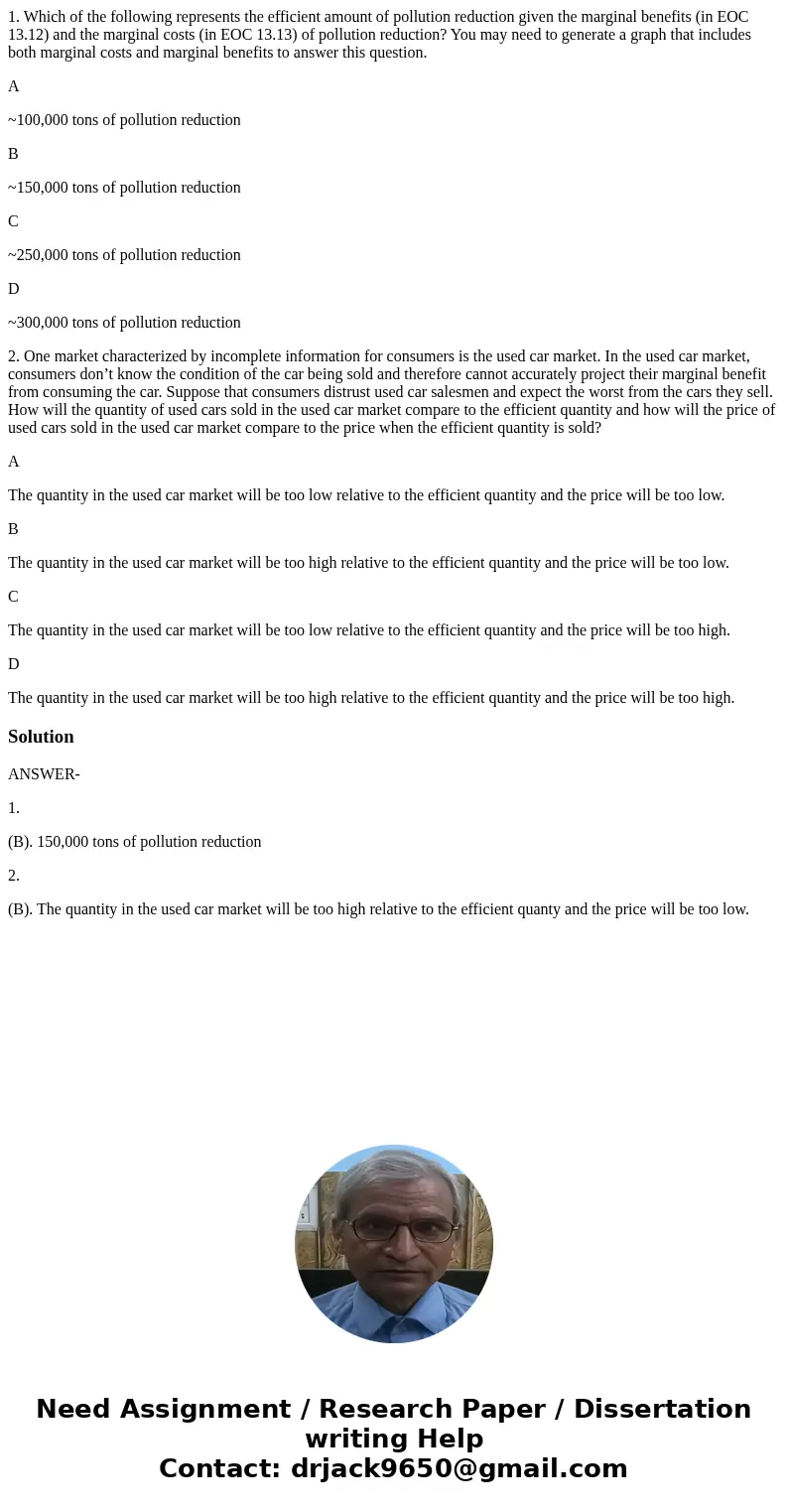1 Which of the following represents the efficient amount of
1. Which of the following represents the efficient amount of pollution reduction given the marginal benefits (in EOC 13.12) and the marginal costs (in EOC 13.13) of pollution reduction? You may need to generate a graph that includes both marginal costs and marginal benefits to answer this question.
A
~100,000 tons of pollution reduction
B
~150,000 tons of pollution reduction
C
~250,000 tons of pollution reduction
D
~300,000 tons of pollution reduction
2. One market characterized by incomplete information for consumers is the used car market. In the used car market, consumers don’t know the condition of the car being sold and therefore cannot accurately project their marginal benefit from consuming the car. Suppose that consumers distrust used car salesmen and expect the worst from the cars they sell. How will the quantity of used cars sold in the used car market compare to the efficient quantity and how will the price of used cars sold in the used car market compare to the price when the efficient quantity is sold?
A
The quantity in the used car market will be too low relative to the efficient quantity and the price will be too low.
B
The quantity in the used car market will be too high relative to the efficient quantity and the price will be too low.
C
The quantity in the used car market will be too low relative to the efficient quantity and the price will be too high.
D
The quantity in the used car market will be too high relative to the efficient quantity and the price will be too high.
Solution
ANSWER-
1.
(B). 150,000 tons of pollution reduction
2.
(B). The quantity in the used car market will be too high relative to the efficient quanty and the price will be too low.

 Homework Sourse
Homework Sourse